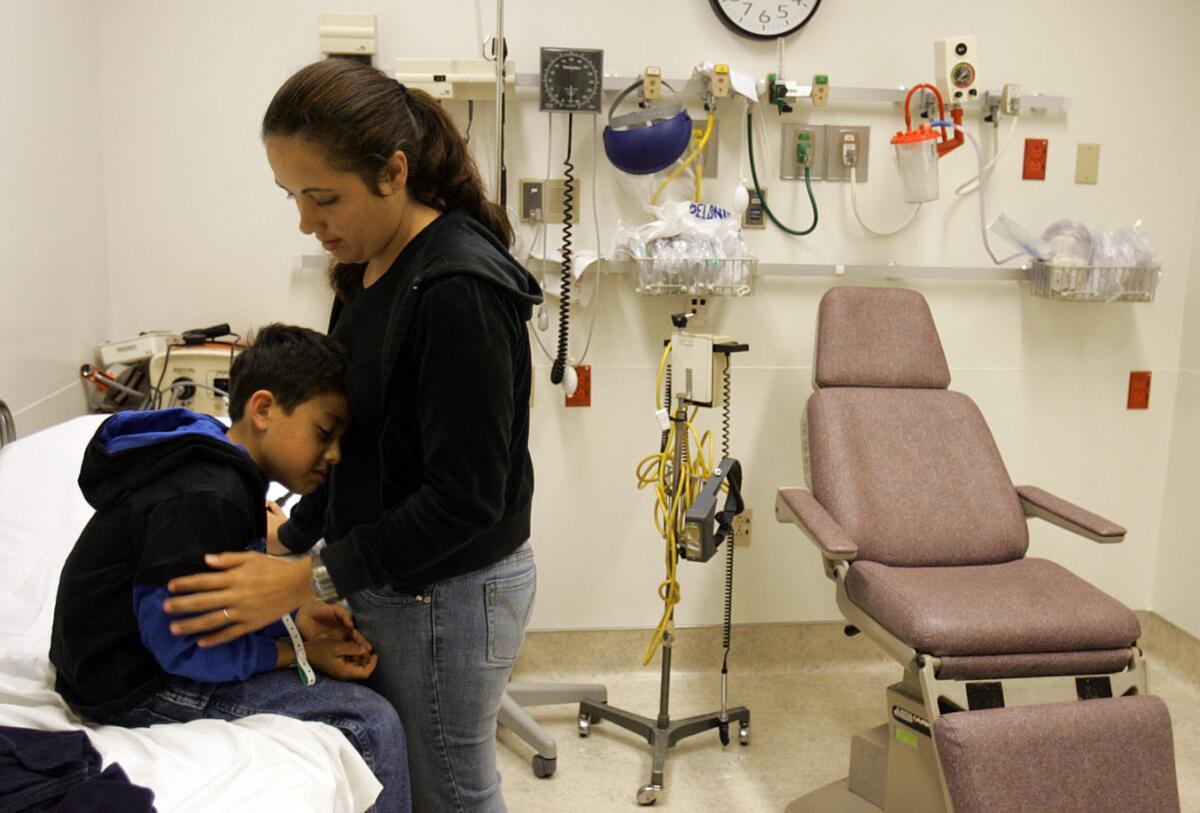Put Medi-Cal expansion on the front burner

- Share via
The 2010 healthcare reform law has three interlocking goals: to expand insurance coverage, improve the quality of care and slow the rise of healthcare spending. The first goal is the costliest, requiring federal and state governments to extend public and private insurance plans to millions of people who can’t afford to pay the full price. Yet bringing them under the insurance umbrella is crucial to improving the quality, efficiency and cost-effectiveness of their care.
The law tries to expand coverage in part by having states sign up more impoverished legal residents for Medicaid, the federal-state healthcare program for the poor. California legislators are now debating competing visions for how to do that in Medi-Cal, the state’s Medicaid program: an expansive approach promoted by Assembly Speaker John A. Perez and Sen. Ed Hernandez (D-West Covina), and a far more cautious one advanced by the Brown administration. The governor has some valid concerns, but the bills by Perez and Hernandez are less likely to leave vulnerable Californians uninsured.
According to research by UC Berkeley and UCLA, 5.6 million Californians are expected to be uninsured in 2014, about 40% of them in households with incomes at or near the federal poverty line ($23,550 for a family of four). These residents often obtain care in the most expensive and least efficient ways — for example, by waiting until a problem becomes acute, then seeking treatment at a hospital emergency room.
Part of the challenge is getting people to enroll in Medi-Cal as soon as they’re eligible so they can receive preventive care and have their treatment managed and coordinated. There’s little incentive to do so today; people can go without Medi-Cal until they are sick or injured, then sign up on the spot when they show up at a clinic or ER for treatment.
Another factor is red tape. The rules for determining eligibility are complex and the paperwork demanded can be daunting. The 2010 law tries to lower those barriers by vastly simplifying the eligibility test, telling states to look at a household’s total income rather than a selective combination of income and assets. It also allows states to verify household income electronically through a new federal hub that combines tax filings and other records.
Diana S. Dooley, California’s secretary of Health and Human Services, says the administration needs to understand the effects of the changes wrought by the law, so it wants to modify the current system only where it has to. That’s one explanation for the amendments the administration has sought in the Medi-Cal simplification bills advanced by Perez and Hernandez, which would streamline entry into Medi-Cal and standardize its benefits. A less charitable explanation is that the administration is trying to cut costs by minimizing the number of Medi-Cal beneficiaries, leaving other low-income Californians to seek subsidized coverage through a new state insurance exchange. Although the exchange will make it simpler to shop for insurance, the out-of-pocket costs will still render coverage unaffordable for many. The administration also opposes the bills’ efforts to replace all enrollment paperwork with electronic verification, which it argues would go further than federal law allows.
The increased cost of Medi-Cal and the risk of fraud are legitimate concerns. But the point of this exercise is to open the doors to Medi-Cal wider so that more poor Californians can be covered. After all, the public pays for their care regardless — typically in the form of higher medical bills and insurance premiums. And for the next three years, the federal government will cover nearly the entire cost of the newly eligible Medi-Cal recipients. The state should maximize participation now, when so many federal dollars are available, then scale back later if necessary.
The state is expected to expand Medi-Cal eligibility to childless adults and more families near the poverty line, as allowed by the 2010 law. But even so, it will barely make a dent in the number of eligible Californians who sign up for coverage, recent projections show — in part because of the difficulties faced by those who don’t speak English. In other words, the lack of coverage among the very poor is deeply entrenched. The Brown administration should join lawmakers in attacking the problem as aggressively as it can.
More to Read
A cure for the common opinion
Get thought-provoking perspectives with our weekly newsletter.
You may occasionally receive promotional content from the Los Angeles Times.






